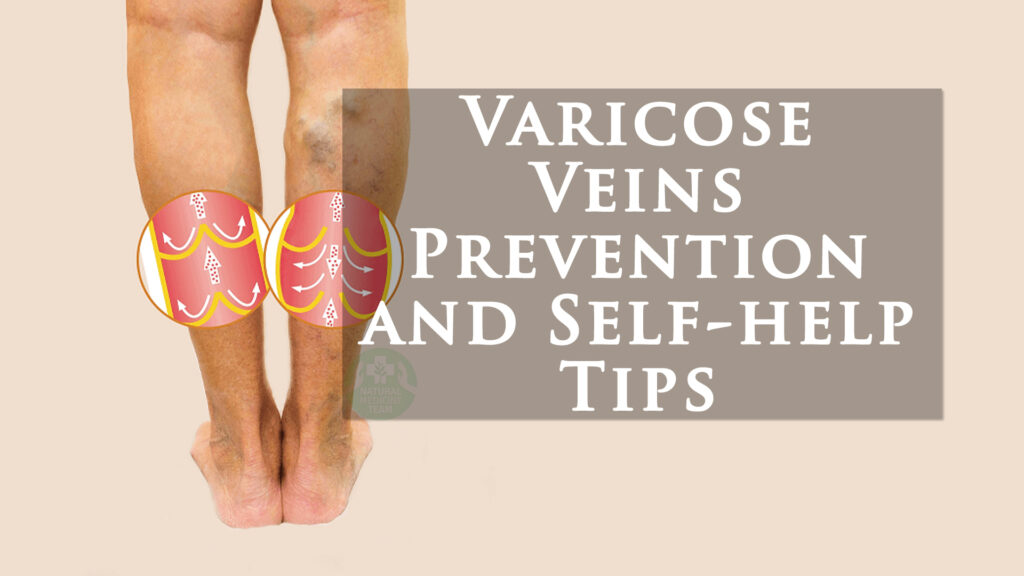Varicose veins are a problem that afflicts a large part of the population. According to some statistics, approximately 40% of the population at some point in life faces this problem, and it is much more common in women.
Varicose veins are characterized by swollen or enlarged veins and nodular varicose veins. All veins can be varicose, but most often the superficial veins of the extremities are affected, usually the legs because of the pressure when we stand.
For many, this problem is of an aesthetic nature (unpleasant appearance), but varicose veins can be quite painful, so they create frequent discomfort. In some cases, they can lead to more serious problems.
There are several interventions (sclerotherapy, laser therapy, venous ablation, etc.) to repair the problem of varicose veins, but we will focus on prevention and ways in which you can help yourself with varicose veins.
Lifestyle changes are also part of conventional medical therapy (diet and physical activity) for varicose veins.
Table of Contents
Symptoms
Varicose veins are not always accompanied by pain, and the most common signs of this problem are dark purple varicose veins and intertwined thick veins in the form of cables. Other symptoms:
- Tingling in the legs
- Muscle cramps
- Swollen legs
- Increased pain when sitting or standing for a long time
- An unpleasant and constant need for itching in the area of varicose veins
- Redness
- So-called spider veins
- Feeling of heaviness in the legs
- Heat
- Pulsations
Potential complications of varicose veins and diagnosis
More serious possible complications from varicose veins are the appearance of skin wounds (venous ulcers), usually close to the joint. Such wounds are very difficult to heal. Blood clots may also occur, as well as inflammation of the affected vein (superficial thrombophlebitis).
Thrombophlebitis usually occurs on the superficial vein, but it can also spread to the deep vein and become a more serious clinical problem. The diagnosis of varicose veins is made with a physical examination, which is completely painless and aims to check the function of the venous valves, as well as to check for the possible presence of a thrombotic mass in the affected vein.
Why do varicose veins appear and what are the risk factors?
Weakened or damaged venous valves (actually controlling the flow of blood in the veins) are the most common problem leading to varicose veins. The arteries carry blood from the heart to all tissues and organs, while the veins have the task of returning the blood to the heart.
Muscle contractions in the lower legs act as a kind of pump and elastic and specially designed veins prevent blood from flowing back through the aforementioned valves. Thus, if the valves are damaged or weakened, blood returns and collects in the veins, causing venous dilatation.
Which people are all at risk for varicose veins?
- Older people
- Women
- Pregnant women
- Those with a genetic predisposition to this condition
- Obese people
- Those who have jobs that require long periods of standing
- Those who have high blood pressure
- Smokers
7 tips for prevention and help with varicose veins:
Regular physical activity
Regular physical activity promotes better circulation in the legs, which helps remove accumulated blood in the veins. Physical activity also helps lower blood pressure, which is also important for varicose veins.
The effect is best when the physical activity is moderate, such as walking, cycling, swimming, etc.
Wearing compression stockings
Compression stockings are one of the most effective ways to help yourself in this situation. By putting pressure on the legs, like squeezing. Compression stockings help the veins and muscles to pump blood more efficiently “up” to the heart. According to several studies, patients who wore such socks had significantly less pain and discomfort.
Wear lighter and non-tight clothing
Wearing tight clothing can contribute to poor blood circulation, especially in peripheral blood vessels.
You need certain changes in your diet
Foods rich in salt can cause the retention of large amounts of water in the body, so reducing salt in the diet can help minimize this effect, which is also negative for varicose veins. A diet rich in potassium can help reduce water retention in the body.
It is important to get enough fiber because such foods prevent constipation. Prevention of constipation can be very important, as constipation can contribute to (additional) damage to the valves. Foods rich in fiber: fresh foods (fruits and vegetables), whole grains, nuts, legumes, etc.
Additionally, given that obese people have an increased risk of varicose veins and from this aspect, it is very important to have a healthy and proper diet.
Eat more foods with flavonoid antioxidants
Eating such foods can help reduce swollen varicose veins. Flavonoids improve circulation and prevent blood clots in the veins. Also, they help lower blood pressure in the arteries and relax blood vessels, which is also important for preventing and improving the condition of varicose veins.
Food that is rich in flavonoid antioxidants: vegetables (onions, garlic, peppers, spinach, broccoli, etc.), citrus fruits, cherries, apples, berries, cocoa, etc.
Keep your legs raised
Keeping your legs raised at or above the heart can help improve circulation. In this way, you reduce the pressure in the veins of the legs, and gravity will help the blood to return more easily to the heart.
This tip is good to apply after long periods of sitting or standing.
Practice massages
Massages with essential oils have been shown to improve circulation in the lower extremities, and we know how important circulation is for varicose veins.
But it is very important that massages do not involve strong pressure on the varicose veins. Massages should be gentle.

